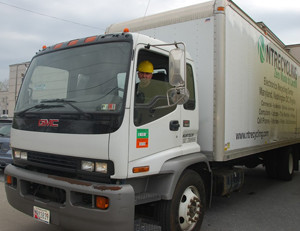- What are some future developing activities or programs to address e-waste?
- Should I recycle or reuse my items, how do I know which action to take?
 Some research that has been carried out on green electronics has some useful lessons for how we can address the e-waste problem. One program is to develop a hybrid life cycle assessment of energy use in manufacturing personal computers from the Information Technology and Environment project of the United Nations University (www.it-environment.org).
Some research that has been carried out on green electronics has some useful lessons for how we can address the e-waste problem. One program is to develop a hybrid life cycle assessment of energy use in manufacturing personal computers from the Information Technology and Environment project of the United Nations University (www.it-environment.org).
Another approach is a free international market in used electronics and e-waste, but with strong investment and regulation mechanisms to make sure it is appropriately handled wherever it lands.
 Donate/Reuse: Ask yourself do you want to provide a community service by donating your outdated equipment Would you like to receive a tax deduction for your contribution? (refer to I.R.S. tax exempt status to see if you qualify) What are your data security needs?
Donate/Reuse: Ask yourself do you want to provide a community service by donating your outdated equipment Would you like to receive a tax deduction for your contribution? (refer to I.R.S. tax exempt status to see if you qualify) What are your data security needs?
Refurbish/Recycle: Do you want the equipment completely destroyed? Do you want the equipment to be re-manufactured into raw materials (i.e. metals, plastics, and/or glass) and marked as recyclables? Do you want your equipment to be resold in the market?
Where can I recycle?
There are many facilities where you can properly dispose your e-waste in your community. You can also donate your disposable items at your local electronics recycling company for reuse.
Why recycle your e-waste materials?
Reusing and recycling consumer electronics conserves natural resources To avoid air and water pollution To decrease the toxic hazards to the environment for a safer and healthier driven communities.
How much e-waste is generated nationally or internationally?
These questions are very important, yet almost difficult to answer given current systems of gathering information. Some manufacturers and company recycling facilities do not take the time to distinguish between new and old goods or production flows of secondary waste products are by and large, which makes it sort of invisible to national statistics. Many countries who record their e-waste per year have yet to update their current status of production. However, according to the latest records of the USA report in 2000, which they recorded that they received the amount of 2,158,490.
Where is e-waste exported?
Traders usually send it to developing countries where workers earn extremely low wages and where health, safety, environmental laws, enforcement, infrastructure and citizens’ rights are very weak.
How much e-waste is actually recycled?
Studies in 2008 in the USA reported that we generated over 3.16 million tons of e-waste. Of this amount, only 430,000 tons or 13.6% was recycled, according to the EPA. The rest was completely trashed in landfills or incinerators.
Is it safer to e-waste?
Yes. Everyone will be able to enjoy a safer and healthier toxic free environment! Some recyclable materials such as copper, aluminum, lead, gold, and palladium are recovered from computers, televisions, and much more. These valuable materials are able to be refurbished and added to other items for enhancement, which in turn, make those items more valuable and able to be resold in the market.
When to recycle your e-waste?
When these items become outdated, damaged, broken or simply if you feel like voluntarily donating the electronic items you define as waste, but still recyclable.
Where can I find more information on e-waste?
The internet is usually a primary source for finding resourceful or current information on many topics. You can also always visit your local library to look for old archives, books, newspapers and more research more information on e-waste.




